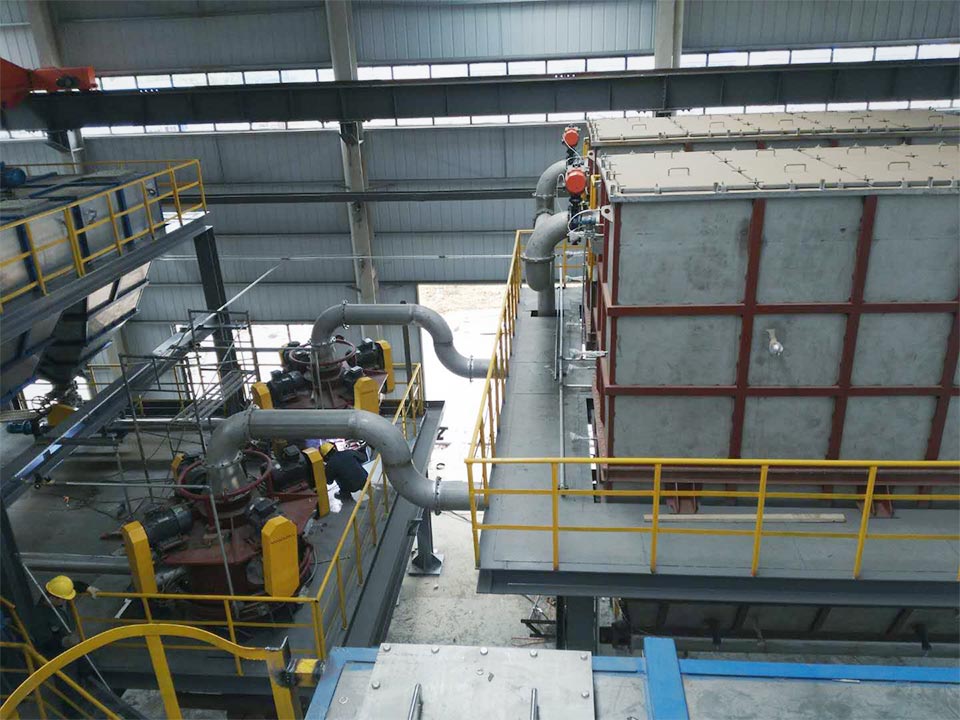Laboratory jet mill runs under full negative pressure, no dust pollution
The laboratory jet mill is a kind of small crushing equipment developed and produced for universities, research institutes, and small processing companies. The laboratory jet mill has the characteristics of high crushing accuracy, accurate classification, and the whole machine is small and easy to operate.
The laboratory jet pulverizer is composed of a pulverizing host, a classifier, a cyclone separator, and a pulse dust box. The materials enter the crushing chamber from the feeding hopper, and the materials are blown by high-speed airflow to make them collide and rub each other to be crushed. The distance between the grading knife and the grading disc is adjusted to achieve the required fineness. The crushed material enters the cyclone separator under the action of centrifugal force and the induced draft fan, and then is discharged through the fan induced air, and the dust enters the pulse dust collector, and is recycled after being filtered by an anti-static dust bag. The machine is designed according to the "GMP" standard. The whole machine is made of 304 stainless steel. It runs under full negative pressure, and there is no dust during the crushing process.
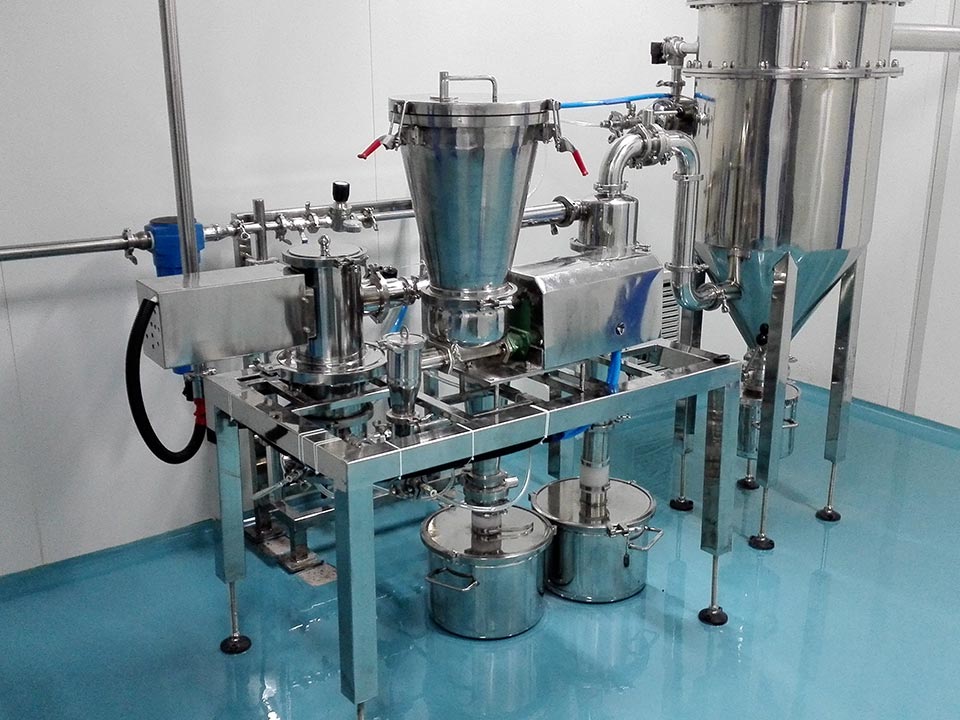
The laboratory jet mill also has the following performance advantages:
- It is used for small batch processing in the laboratory, the minimum feeding amount is about 500g;
- The granularity of crushing and classification can be adjusted arbitrarily from D50:1~45μm;
- Frequency conversion control, stable fineness and continuous work;
- Quick installation connection, easy to disassemble, easy to clean, no dead angle;
- The crushing process does not heat up, no impurities are mixed, and the noise is low;
- Small footprint and beautiful appearance;
- Good sealing, no dust, and small loss;
- It can flexibly realize the integration of jet smashing, jet grading, and mechanical smashing;
- The rotor of the horizontal high-efficiency classifier can reach 18,000 rpm;
- The mobile mechanical crusher unit is extremely convenient to disassemble and assemble;
- The mechanical pulverizer can realize full ceramicization;
- It can realize inert gas circulating atmosphere and powder classification of flammable and explosive materials;
- The sintered plate filter and dust removal unit can be selected, and the filter accuracy can reach 0.1μm99.9.
Jet mill achieves a breakthrough in the grinding of lithium battery materials
Lithium iron phosphate is a new type of lithium-ion battery electrode material. The ultrafine jet mill can pulverize lithium iron phosphate to 1-5 microns and achieve precise classification.
The lithium iron phosphate ultra-fine jet pulverization production line is a special production line specially developed for lithium iron phosphate pulverization according to the needs of the manufacturer and the problems encountered in the production and treatment of lithium iron phosphate. This production line is a closed cycle system that uses high-temperature dry nitrogen. , A device for simultaneous ultra-fine grinding and drying of lithium iron phosphate; the sintering system, crushing system, and packaging system for producing lithium iron phosphate are fully enclosed. Lithium iron phosphate is enclosed and transported during the sintering, crushing, packaging and other processes; the crushing system uses high-temperature dry nitrogen as the crushing gas source to dry the lithium iron phosphate instantaneously, and the lithium iron phosphate crushing and drying are carried out at the same time. This system solves the problem of continuous drying of phased products in the production process of lithium iron phosphate, saves energy and reduces production costs.
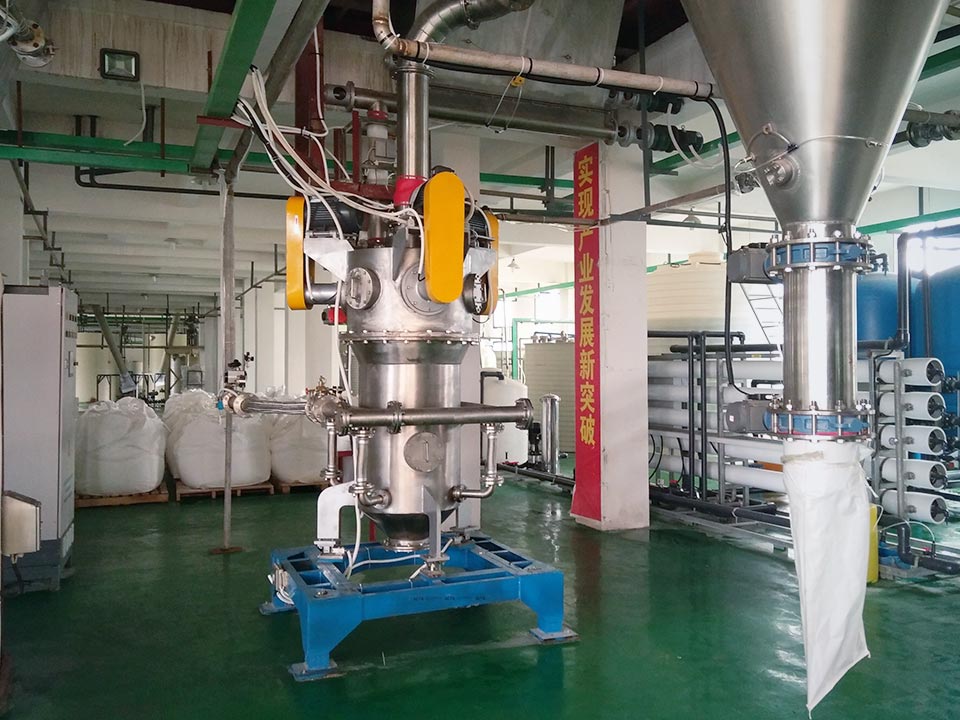
The new type of lithium iron phosphate ultrafine jet pulverization production line is a dedicated production line system that integrates high-temperature nitrogen protective jet pulverization and drying systems. Using high-temperature dry gas, while ultra-fine grinding of lithium iron phosphate cathode material for lithium batteries, supersonic airflow rotary jet flow field is used to conduct heat and mass transfer and instantaneous drying of the surface water of the material to achieve ultra-fine grinding of lithium iron phosphate. +Integration of trace moisture drying. When the feed moisture is 3000PPM and the feed particle size d50=20-30μm, the finished product particle size d50=0.6-2μm, d100=4-10μm, and the finished product moisture 200-500PPM after the integration of crushing and drying. Taking the production line with an annual output of 3000T as an example, the energy consumption per ton is 650-900 yuan/T, and the nitrogen consumption is 410-600Nm3/h. Compared with the traditional double-cone drying or roller furnace drying and ultra-fine grinding process, it saves 4.5-5.5 million yuan in energy consumption every year. At the same time, the ultra-fine pulverization and drying process realizes a fully closed-circuit air conveying system, which produces no dust pollution throughout the process. This process realizes the effective combination of lithium iron phosphate ultrafine grinding technology and ultrafine particle surface trace moisture control technology, and effectively solves the current problems that restrict the service life and safety of lithium batteries. It is lithium iron phosphate ultrafine powder for lithium battery cathode materials. A major breakthrough in the field of body preparation.
Various types and models of ultra-fine jet mills, classifiers, and crushing production lines are suitable for rare earth, mining and metallurgy, chemical, energy, medicine, feed, food and other industries. Whether the processed materials are ore, rare earths, non-ferrous metals, plastics, medicinal materials, agricultural products, or flammable, explosive, and oxidizable materials, it can meet your requirements on the particle size, output, and energy consumption of the finished product.
Air classifier can classify particles of various shapes
Air classifier is a kind of fine powder screening equipment, it is a kind of non-screen type classification equipment. Compared with screen type, air classifier is more in line with the requirements of today's environmental protection, and can be dust-free and stain-free during processing. And because it has no screen, it can effectively avoid the phenomenon of material blocking and adhesion, and can also ensure the purity of the raw materials.
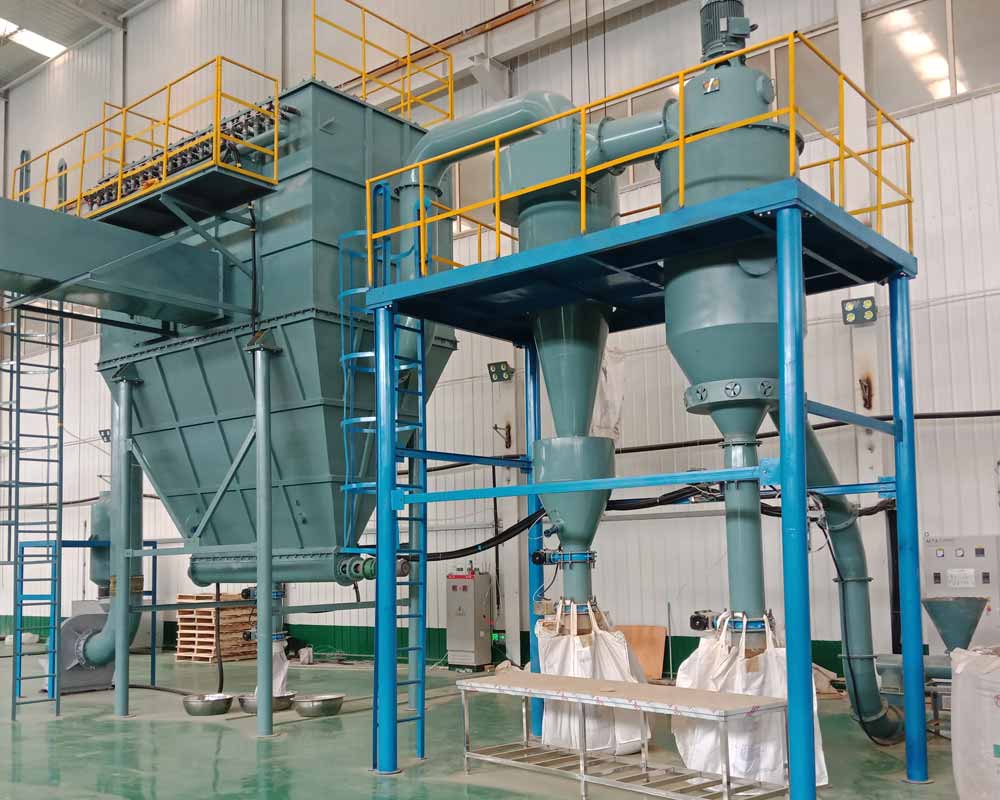
The airflow classifier can classify spherical, flake, and needle-shaped particles, and can also classify particles of different densities. It has a wide range of applications, covering almost all areas of dry fine powder, such as metal powder, alloy powder, mineral powder, battery materials, ceramic powder, rare earth, etc. The wide application range of the air classifier benefits from its following performance advantages:
- It is suitable for the fine classification of dry micron products. It can classify spherical, flake, and needle-shaped particles, and can also classify particles of different densities.
- The particle size of the classified products can reach D97: 2~45 microns, the product particle size is adjustable, and the variety is extremely convenient to change.
- The classification efficiency (extraction rate) is 60% to 90%, and the classification efficiency of materials with good fluidity is high, otherwise the efficiency is reduced.
- The vertical grading turbine device is adopted, which has low speed, wear resistance and low system power configuration.
- It adopts horizontal grading turbine device with high speed and accurate apex cutting.
- Multi-stage classifiers can be used in series to produce products with multiple particle sizes at the same time.
- It can be used in series with ball mills, vibration mills, Raymond mills and other grinding equipment to form a closed loop.
- The control system adopts program control, the running status is displayed in real time, and the operation is simple and convenient.
- The system operates under negative pressure, and the dust emission does not exceed 40mg/m³, and the equipment noise is not higher than 75dB(A) through the use of silencer measures.
The performance advantages of jet mills can replace most mechanical pulverizers
Due to the widespread nature of industrial production, with the rapid economic development, jet mills have developed rapidly. In the scientific research and development process of powder production, application and equipment manufacturing, new equipment and new products are constantly appearing on the market. Jet mill is one of many crushing equipment.
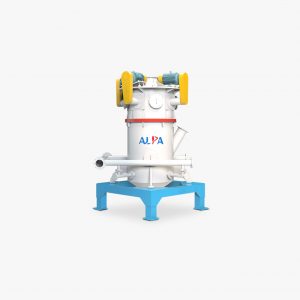
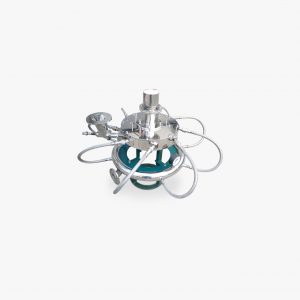
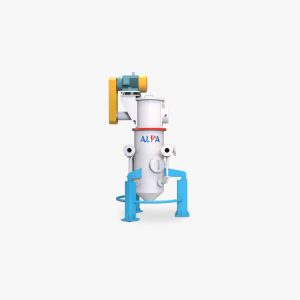
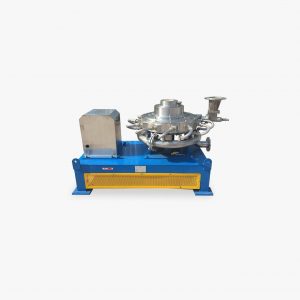
Jet mill is different from other pulverizers. It is under the action of high-speed airflow, the material is crushed by the impact between the particles of the material, the airflow impacts the material and the impact, friction, and shear of the material and other parts. Therefore, the average particle size of the material after airflow pulverization is fine, the particle size distribution is narrow, the particle surface is smooth, the particle shape is regular, the purity is high, the activity is high, and the dispersibility is good; With compressed air as the power, the adiabatic expansion of the compressed gas at the nozzle will reduce the temperature of the system). And if N2, CO2 and other gases are used, it can be crushed in an inert atmosphere under special occasions.
Jet pulverization can be operated under aseptic conditions; the production process is continuous, the production capacity is large, and the degree of self-control and automation is high. However, the production cycle of crushing equipment such as mechanical impact mills, vibration mills, and stirring mills is often long, resulting in low production efficiency; a large amount of heat is generated when the materials are crushed, which causes the deterioration of heat-sensitive materials; and the wear of the equipment will contaminate the products. . Therefore, these mechanical pulverizers can no longer fully meet people's increasingly high requirements for ultra-fine powder materials. Jet pulverization equipment has a tendency to replace mechanical pulverizers in the production of ultra-fine powder. Since the advent of the jet mill in the 1930s, through the efforts of many researchers, its structure has been continuously updated and the types have continued to increase. Fluidized bed jet mill, target jet mill, supersonic jet mill, etc.
There are many types of ultra-fine jet mills with different structures, and each model has its advantages and disadvantages. In recent years, the crushing equipment has been greatly improved on the basis of the previous, its structure has been continuously improved, and the crushing performance has been continuously improved. In order to meet the higher requirements of the development of information technology, biotechnology and new material technology on the particle size, purity and particle size distribution of powder products, the research of ultrafine jet pulverization technology should focus on the development of the following aspects: To improve and optimize ultra-fine jet mill equipment, develop new equipment, and pay attention to the matching design of pulverization and classification systems; there are not many large-scale equipment. In the above-mentioned ultra-fine jet mill, in comparison, the fluidized bed collision type Jet mill has obvious advantages, so theoretical research should be strengthened to guide the design of crushing equipment; since the biggest disadvantage of jet mill is low energy utilization rate, ways to reduce energy consumption and increase energy utilization rate should be sought.
The particle size of the air classifier can be adjusted freely, with high precision and high efficiency
The particle size distribution of ternary materials will affect the specific surface area, compaction density, pole piece processing performance and electrical performance of the battery. The grinding equipment can only control the particle size of the material, but it cannot control the particle size distribution of the material. If you want to control the particle size distribution of the material, you must use a grading device. The classification of ternary materials is generally followed by the airflow pulverizer with an airflow classification device to directly classify the crushed products. The airflow classifier is related to the quality of the final product of the ternary material.
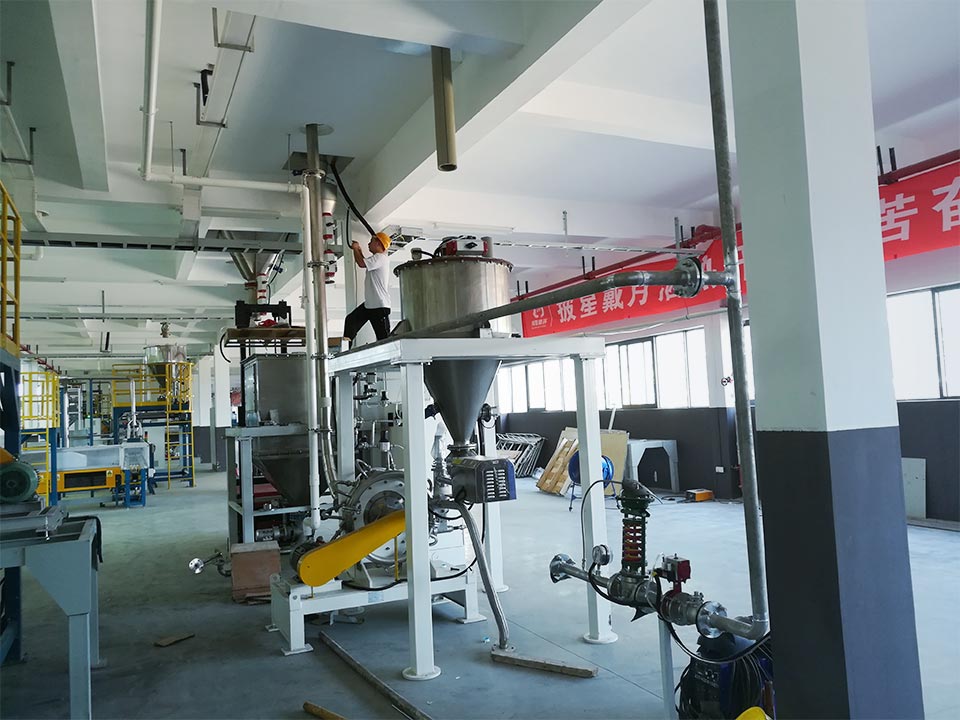
The classifier, cyclone separator, dust collector, and induced draft fan form a set of classification system. Under the action of fan suction, the material moves to the classification area at high speed from the lower inlet of the classifier along with the updraft. Under the strong centrifugal force generated by the high-speed rotating classification turbine, the coarse and fine materials are separated, and the fine particles that meet the particle size requirements are classified. The gap between the wheel blades enters the cyclone separator or the dust collector to collect, the coarse particles entrained by the part of the fine particles hit the wall and the speed disappears, and they descend along the cylinder wall to the secondary air outlet. After the strong elutriation of the secondary air, the coarse and fine particles are separated. The particles rise to the classification zone for secondary classification, and the coarse particles fall to the discharge port for discharge.
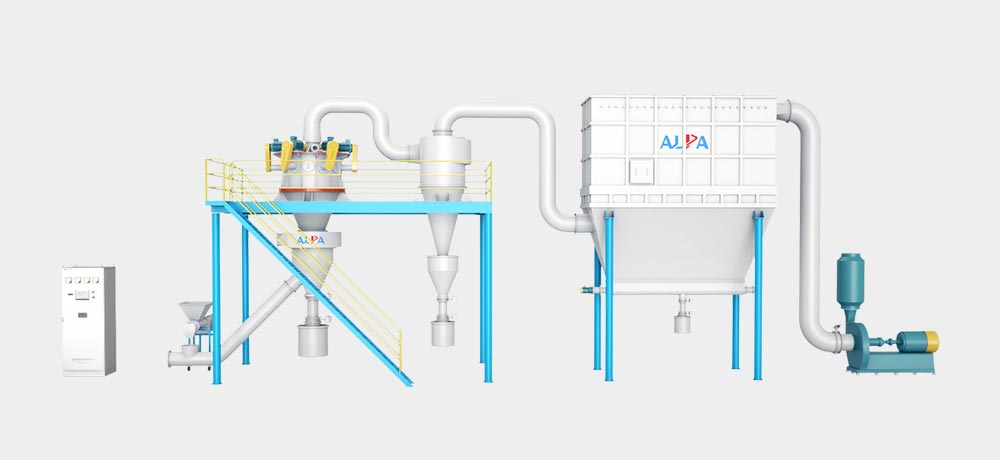
The structural characteristics of the ternary material air classifier:
(1) Under the action of the high-speed rotating impeller, the pressure of the gas flowing through the impeller increases. After the high-pressure airflow flows out of the impeller, it passes through the injection fine-particle ring. Because the blades of the rotating guide vane are designed to be curved, the cross-sectional area of the inlet is Larger, the outlet cross-sectional area is small, so the airflow pressure at the outlet decreases, the speed increases, and it flows out in a rotating direction, which is conducive to classification.
(2) The grading point adjustment mechanism is equipped with three adjustment rods, and a chain is used to keep it moving in sync. The adjustment lever moves upward. The fine powder increases; when the adjusting lever moves down, the fine powder decreases. The classification point can be continuously adjusted steplessly. The particle size of the air classifier with better performance is steplessly adjustable. The particle size of the classified product can reach D97: 3 ~ 150 microns, which is suitable for the fine classification of dry micron products.
(3) Control ring setting: The control ring is to ensure that a suitable cross section is formed between the control ring and the injection fine particle ring, and the flow rate of the control air flow is stable.
(4) The residual air vent will inevitably bring in excess gas from the dry materials, and the temperature in the classification room is higher, and the air will expand. Therefore, a residual air vent is designed to maintain a stable and balanced air flow in the classification room.
The performance of lithium iron phosphate jet mill meets user needs
The material is fed into the crushing chamber between the machine body and the splitter ring by the screw feeder through the feed port, and is driven by the high-speed rotating hammer disk in the room, thrown to the stator gear ring fixed on the machine body, and is impacted and crushed. Under the pulling force of the negative pressure airflow, the crushed materials have small particles that overcome the weight of the powder particles and make them exceed the split ring and enter the classification chamber between the split ring and the grading impeller. The grading impeller is composed of blades, which are driven to rotate by a motor to generate an internal circulating air flow. When the powder passes through the gap between the grading impeller blades, it is subjected to three forces at the same time, namely the centrifugal force, gravity and the pulling force generated by the negative pressure airflow. Only the fine particles with negative pressure greater than the centrifugal force and gravity can pass the classification smoothly. The impeller enters the cyclone separator. Large powder particles are thrown to the shunt ring due to their large centrifugal force and return to the crushing chamber to be crushed again.
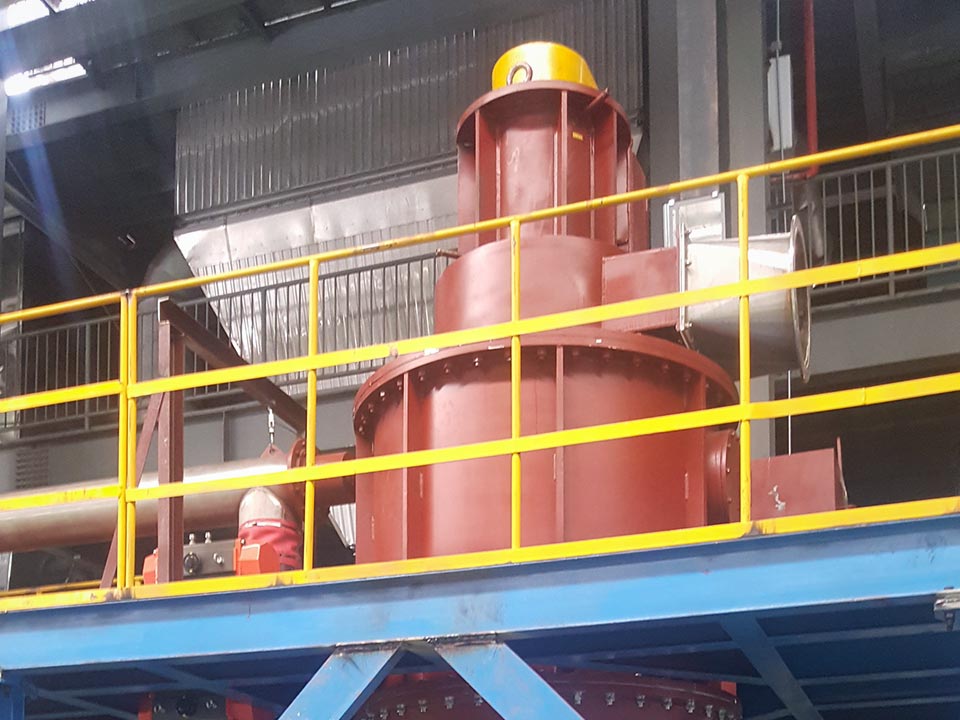
Technical characteristics of lithium iron phosphate jet mill
- The grading adopts horizontal grading wheel, which has more accurate cutting accuracy and higher grading efficiency than vertical grading wheel.
- The use of high-speed, small grading wheels to ensure grading accuracy, which is more than twice as accurate as the use of large wheels and low-speed jet mills.
- After a special flow field design and high-precision mechanical processing, the energy consumption is reduced by 30% compared with the disc and cyclone jet mills under the same output.
- Production serialization: 2~5000 kg/h; high fineness: d97=1~180μm;
- Good particle shape, narrow particle size distribution range;
- Program control, imported components; good man-machine interface, easy to operate;
- Infinitely adjustable, stable operation, thorough cleaning, easy to change varieties;
- Wide application range: various soft and hard materials with Mohs hardness below 9.5;
- It has a wear-resistant protection device, and the life of the silicon carbide graded wheel is 1000H.
The air classifier becomes a hot-selling product inseparable from its environmental advantages
Before the introduction of the air classifier, the sorting equipment used in the industry was mainly mesh screening, such as vibrating screens. However, the mesh screening can only separate the finest powder of about 400 meshes, which cannot meet the requirements for materials with high precision requirements, and the phenomenon of material blocking and adhesion is prone to occur in the mesh screening process. The emergence of the air flow classifier perfectly solves this problem. It is mainly used to carry the animal material through the air flow. Under the strong centrifugal force generated by the high-speed rotating classification turbine, the powder mixed in the gas-solid two-phase fluid is divided according to the particle size. Separately, this classification method has the characteristics of high precision (200-8000 meshes can be adjusted freely), high efficiency, and large output. It also has the phenomenon of material blocking and adhesion due to the absence of mesh screens.
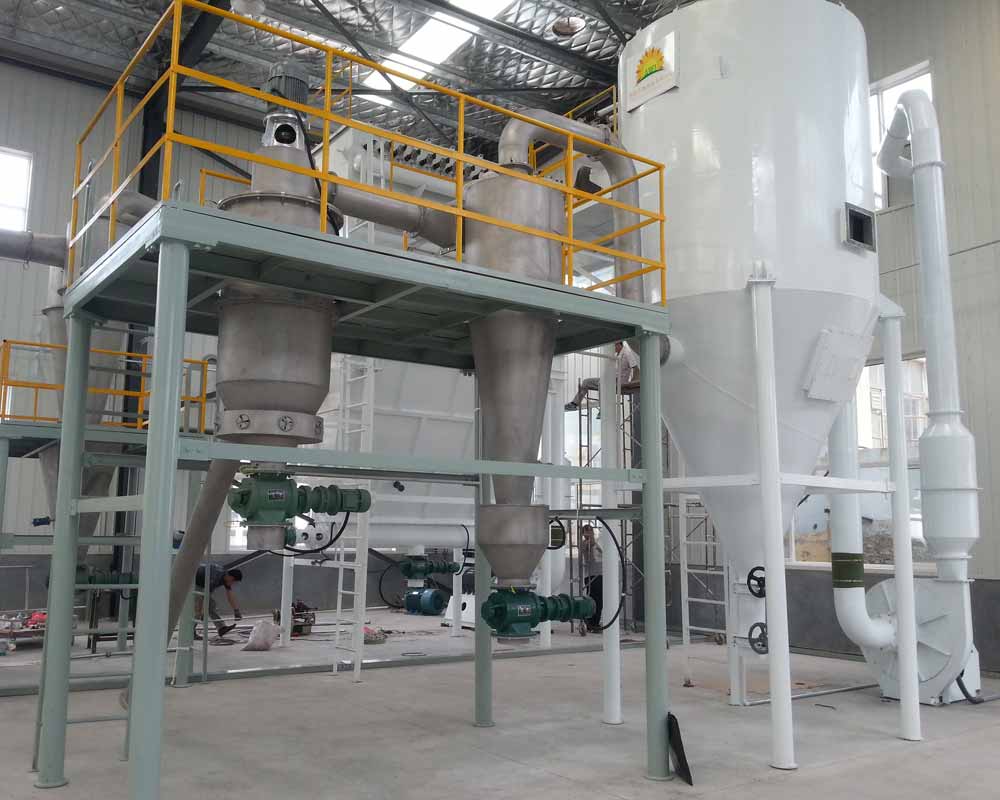
Once the airflow classifier was launched, it has been sought after by the majority of users and has been widely used in various processing fields and has become a hot-selling product.
Features of air classifier:
1. Large output, low energy consumption and high grading efficiency.
2. Concentrated particle size: The machine uses an independent vertical impeller for classification. Stable classification technology and special sealing measures effectively prevent the leakage of coarse particles, so that the product has no large particles, concentrated particle size, and high classification accuracy.
3. Reasonable structure: products with 1-6 particle sizes can be produced at the same time according to user requirements.
4. Strong applicability: It can be combined with various mills (jet mill, mechanical mill, ball mill, Raymond mill, vibration mill), etc. to form a closed-circuit or open-circuit combined operation.
5. High automation program: all impeller classifiers at all levels adopt electronic frequency conversion stepless speed regulation, and the automatic circulation type multi-box dust collection process realizes electronic control and automatic dust removal, which improves the stability of the negative pressure of the whole machine.
6. Airflow classifiers are widely used in chemicals, minerals (especially suitable for the classification of non-mineral products such as calcium carbonate, kaolin, quartz, talc, mica, etc.), metallurgy, abrasives, ceramics, refractory materials, medicine, pesticides, food, health products, new Materials and other industries.
Among the many advantages of the air classifier, the most satisfying user is its environmental protection advantage. Because of the supporting dust removal device, the air classifier can effectively avoid dust pollution during the classification process, thereby protecting the environment and reducing the operator’s burden. Diseases appearing in dust.
Applicable materials for fluidized bed jet mill
The scope of application of ultrafine pulverizers is very wide, but in today's industry, fluidized bed jet mills seem to have become people's conventional choice, but in addition to fluidized bed jet pulverizers, there are many ultrafine pulverizers. Type, such as mechanical mill, impact mill, ball mill, vibration mill, etc. So what kind of materials is the fluidized bed jet mill suitable for?
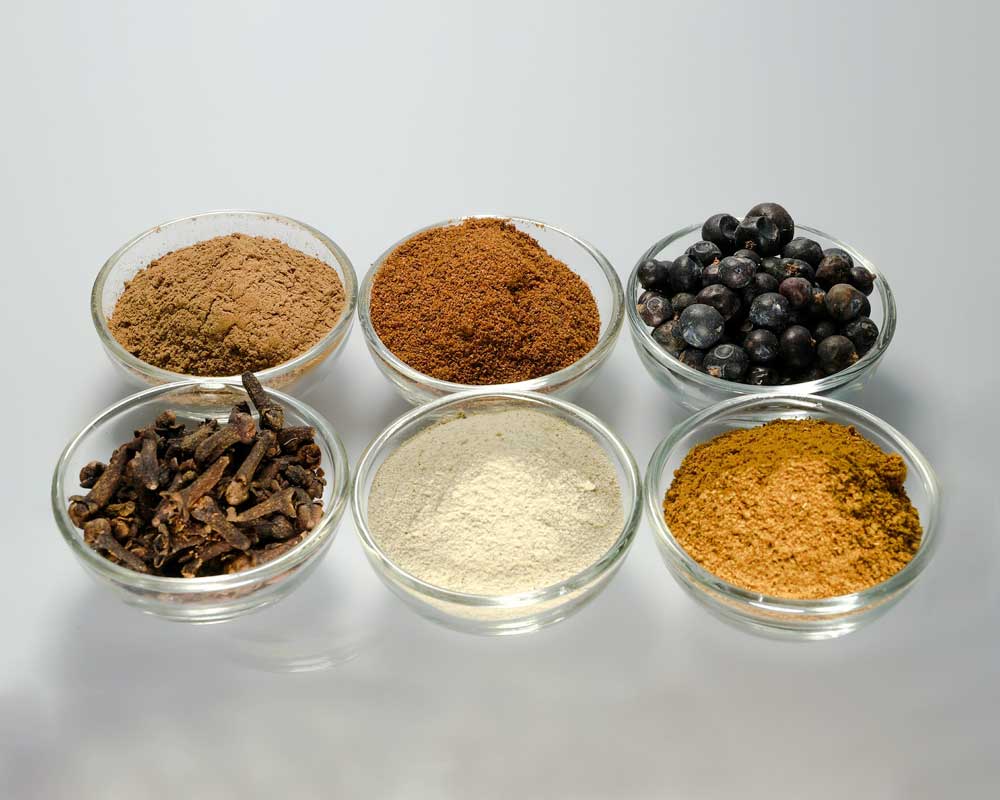
1. Non-metallic minerals
Heavy calcium, light calcium, calcium oxide, kaolin, barite, quartz, talc (white, black), wollastonite, mica (natural, synthetic), bentonite, feldspar (sodium, potassium), andalusite, hydromagnesium Stone, montmorillonite, graphite, garnet, diatomaceous earth, bauxite, petroleum coke, coal powder, magnesite, perlite, attapulgite, spinel, tourmaline, medical stone, monazite , Pyrophyllite, dolomite, rectorite, plagioclase, diopside, toolite, illite, sepiolite, andesite plagioclase, nepheline syenite, Xiuyan, cyanolite, vermiculite, mullite Stone, clay, boron glass, limestone, clay, etc.
2. Chemical materials
Alumina, aluminum hydroxide, magnesium oxide, magnesium hydroxide, zinc oxide, precipitated barium sulfate, flame retardant, cellulose, calcium phosphate, yttrium oxide, blowing agent, white carbon black, black carbon black, silica gel, strontium carbonate , Low glass powder, 4A zeolite, aluminum silicate, aluminum silicate zeolite, silicate, catalyst, polytetrafluoroethylene, polyethylene powder, PVC, PE, epoxy resin, phenolic resin, petroleum resin, carbonized resin, Polytetrafluoroethylene resin, polyethylene wax, polyvinyl alcohol, nylon, molybdenum disulfide, industrial vulcanizing agent, vulcanization accelerator, rubber vulcanizing agent, activated carbon, zinc stearate, polyether ether ketone, sodium stearate, polypropylene Amide, copper oxalate, diammonium oxalate, bisphenol A, plastic additives, rubber, rubber additives, ammonia rubber coatings, xanthan gum, sulfur, coke, foaming alkali, boric acid, titanium dioxide, dibasic tantalum phosphite , MPUT, organic anhydride, dodecanoic acid, sodium bicarbonate, isohydrogen ester, polyacrylate, methyl cellulose ether, ammonium polyphosphate, ferrite, brominated diphenyl ether, aluminum zirconium glycinate, nitric acid Guanidine, ABS, casein, cellulose, natural or man-made fibers, foam rubber, phenol resin, polycarbonate, polyester, polypropylene, polyvinyl acetate resin, stearate, styrene, Teflon, thermosetting Plastic, water and aluminum chloride, petroleum charcoal, UHMWPE, etc.
3. New materials
Nano titanium oxide, nano ceramic materials, nano tourmaline, nano diatomaceous earth, nano calcium carbonate, nano silicon dioxide, ultra-long afterglow phosphor, halo calcium phosphate phosphor, tricyanine phosphor, glass bead reflective powder, Electroluminescent powder, superfine wood powder, superfine bamboo charcoal powder, etc.
4. Battery materials
Lithium cobalt oxide, lithium manganese oxide, lithium nickel cobalt oxide, lithium nickel cobalt manganese oxide, lithium iron phosphate, manganese dioxide, lithium carbonate, cobalt oxide, ferrous oxalate, lithium hydroxide, lithium hydroxide monohydrate, graphite ( Spherical, flakes), coke powder, carbon microspheres, pitch, etc.
5. Super hard materials
Silicon carbide (black, green), boron carbide, diamond, white corundum, zircon sand, zirconia, rare earth polishing materials, tungsten carbide, silicon nitride, chromium carbide, chromium oxide, brown corundum, chromium corundum, grinding wheel material, oxide Neodymium, pure natural colored sand, etc.
6. Ceramic building materials
Ultra-fine cement, water slag, fly ash, asphalt ore, gypsum, slag, quicklime, silica fume, glass powder, etc.
7. Other materials
Fluorescent pigments, iron oxide red (green, yellow, black), chromium oxide red (green, yellow), phthalocyanine, cobalt blue, zinc oxide, lithopone, benzidine orange, toluidine red, vermilion, mica titanium pearl Pigments, acid dyes, basic dyes, neutral dyes, vegetable dyes, fluorescent whitening agents, waxes, bentonite clay, clay, electronic waste, etc.
8. Medicine and food
Traditional Chinese Medicine: Angelica, Green Tea, Salvia, Ganoderma Spores, Cordyceps, Cangqing Fruit, Panax Notoginseng, Acanthopanax Senticosus, Dictyocarpus, Ganoderma lucidum Powder, Konjac Powder, Tianqi, Ginseng, Sheep Placenta, Pine Pollen, Bee Pollen, Jia Ke Su , Pueraria lobata, Lipu taro, licorice powder, deer bone powder, ginkgo biloba, etc.
Western medicine: urotropine, ibuprofen, theophylline, cilostazol, vitamin C, black cohosh, carbamazepine, wine trough, nimodipine, turtle powder, fenofibrate, acyclovir, Albendazole, nimodipine, acol, meloxicam, fenofibrate, amoxicillin, albuterol, hydrocortisone, oxytetracycline, indomethacin, mefenamic acid, primidone , Flumequine, propaline, prednisone, propylthio, hydroxycellulose, etc.
Pesticides: herbicides, fungicides, insecticides, wettable powder, mildew and antibacterial agents, chlorothalonil, bensulfuron TC, acetamiprid, acetamiprid, carbendazim, clotrimazole, thiabendazole, etc. .
Food: food calcium, coral powder, bone meal, haematococcus, sea cucumber, dehydrated vegetables, malt, calcium/potassium citrate, carrageenan, a bean powder, coffee beans, mannitol, granular gum, sodium alginate, salt, shells , Tomato powder, coenzyme Q10, superfine mica, rose pollen, placenta, pearl powder, cocoa powder, glucose, etc.
The inert gas protection jet mill can control the oxygen content
The inert gas protection airflow crushing production line adopts fully enclosed negative pressure cycle operation, adopts PLC programming control to minimize human operation and control factors. The control cabinet can be placed in a separate control room at a distance. The packaging and discharging use automatic packaging machine, and the on-site observation adopts The monitoring probe can be completely unmanned, and it can also be used in series with a multi-stage classifier to produce products with multiple granularities at a time.
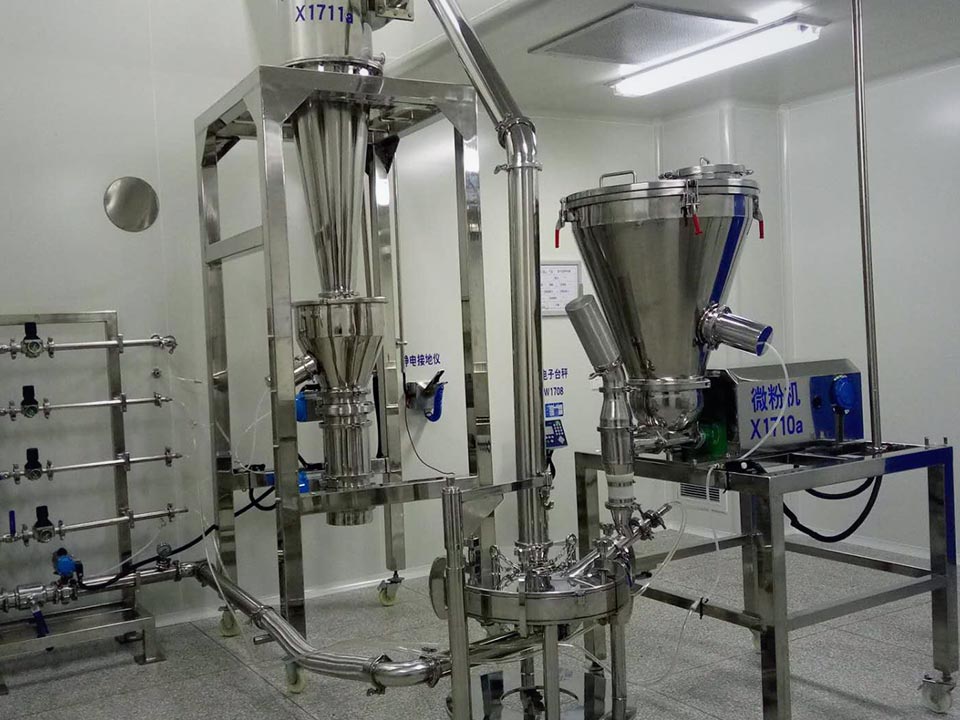
1. Oxygen isolation: Before starting the equipment, replace the air in the closed circulation system with nitrogen. At the same time, the closed feeding and unloading system can replace the small amount of air brought in during the feeding and unloading process with nitrogen to maintain the oxygen in the system. The content is basically stable.
During the process, an oxygen content tester is used to continuously monitor the oxygen content in the airflow, and when it exceeds a certain level, it will immediately add nitrogen to keep the oxygen content within the safety production standard.
2. Control the concentration of gas and powder: The feeding system of the equipment is a fully enclosed, uniform speed device, which is programmed and controlled by the control cabinet. Fully enclosed plays the role of isolating oxygen, while the uniform speed controls the concentration of the materials inside the added equipment, and the feeding speed can be set arbitrarily.
If the materials added to the equipment at a constant speed accumulate inside the equipment, there is no guarantee of safety. Therefore, the shape of the equipment, such as the bending angle of the pipe; the shape of each part, etc., are scientifically calculated to eliminate the dead corners inside the equipment. At the same time, driven and washed by the high-speed airflow in the equipment, the powder will not accumulate in the pipe.
3. Discharge static electricity in time and eliminate ignition sources: The special filter material with carbon steel wire used for the pulse blowback collector can eliminate static electricity in time and ensure that the pulse dust is clean and thorough. The equipment is all metal components, all grounded, in order to release the powder static electricity as much as possible.
4. Circulating air cooling: Because the whole system is a closed circuit system, there are multiple moving parts inside the equipment, which will produce a certain temperature during high-speed movement, and the temperature is very important to the safety in processing. Therefore, the equipment is equipped with a fin-type cooler on the pipeline, which can effectively reduce the safety hazards caused by the equipment working for a long time or working in a high temperature environment.
5. Explosion-proof: The whole system is equipped with explosion-proof holes in different positions of the pipelines, and the loss is minimized when the internal pressure and concentration of the system exceed the standard caused by explosions and explosions.
The motors and other devices used in the whole system are explosion-proof motors, which have better sealing performance and effectively reduce the accumulation of dust.
6. Emergency shutdown: The emergency shutdown trigger switch of the equipment is connected to the oxygen content tester. If the oxygen content concentration monitored by the oxygen content tester does not reach the preset value within the predetermined time, the emergency shutdown is triggered, the equipment stops feeding, and the induced draft fan When shutting down, the classifier shuts down after a delay, and the nitrogen supplement system continues to work until it is manually shut down.
The inert gas shielded jet pulverizer and classifier have been widely used in scientific research institutes, metal powder processing, pharmaceutical ultrafine powder and other fields. The technology is mature, the quality is reliable, and the performance is stable. It has been widely used in processing.
How does the jet mill do not heat up during processing?
Everyone knows that during the processing of mechanical equipment, heat is generally generated due to the friction between the equipment parts and the contact between the raw materials and the equipment, which causes the temperature to rise. For some heat-sensitive raw materials, how to control the processing time Temperature is the top priority. Especially during the crushing process, the temperature is the easiest to increase. How can the temperature be kept constant and not increase? At this time, a jet mill is needed. The jet mill is a representative product in the ultra-fine grinding equipment. It has outstanding performance in terms of processing fineness and efficiency. It is also a highlight of the jet mill that does not heat up during operation.
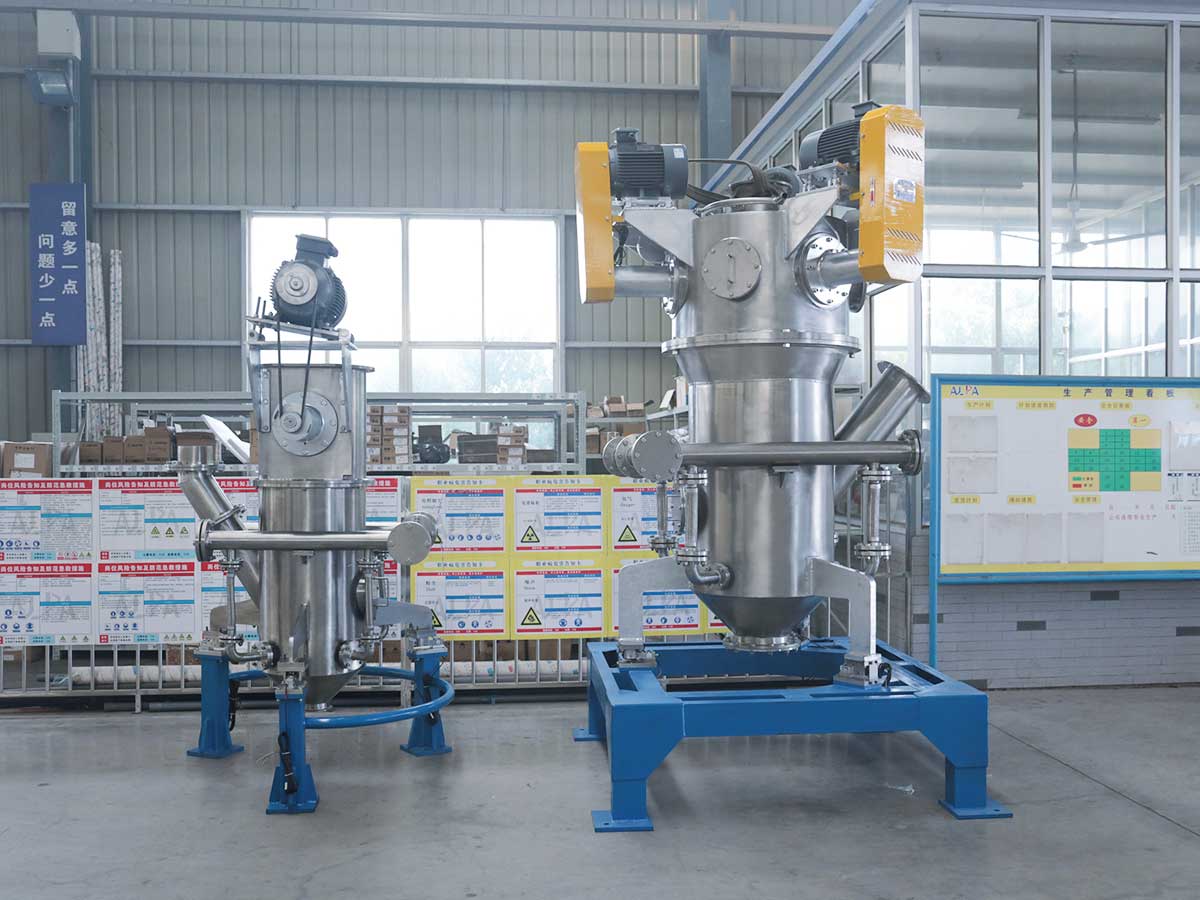
The kinetic energy source of the material particles in the jet mill is compressed gas. When the high-pressure gas accelerates and expands in the Laval nozzle, the pressure is converted into the kinetic energy of the material particles. When the particle size of the material is not uniform, the particle with the smaller mass will be faster, and the particle with the larger mass will be slow. Under the effect of the speed difference, the particles of different particle sizes will collide, thus making the particle size uniform; when the particle size of the material is more uniform When the high-speed jet is a typical turbulent flow, its flow state is not as uniform and stable as laminar flow, and there is violent momentum mixing in the direction of the main flow channel. Under the driving of the mixed flow, the material particles collide and rub evenly, and Obtain more uniform and refined particles.
In general, high-speed airflow expands and cools, even if a certain amount of heat is generated by friction, it will be taken away by the continuously entering airflow, so the temperature in the flow field is low, which makes airflow pulverization particularly suitable for processing heat-sensitive materials. The velocity field of the high-speed turbulence is relatively full and uniform, so the shearing effect of the airflow on the particles is also relatively uniform, and the particle size distribution of the obtained particles is narrow, and the particle shape is also ideal.
Jet mill is one of the most commonly used ultra-fine grinding equipment. It is widely used for ultra-fine grinding or fine grinding of talc, kaolin, barite, graphite, wollastonite, zircon and other non-metallic minerals and other brittle materials. The fineness of the product is generally up to 3-45μm.

